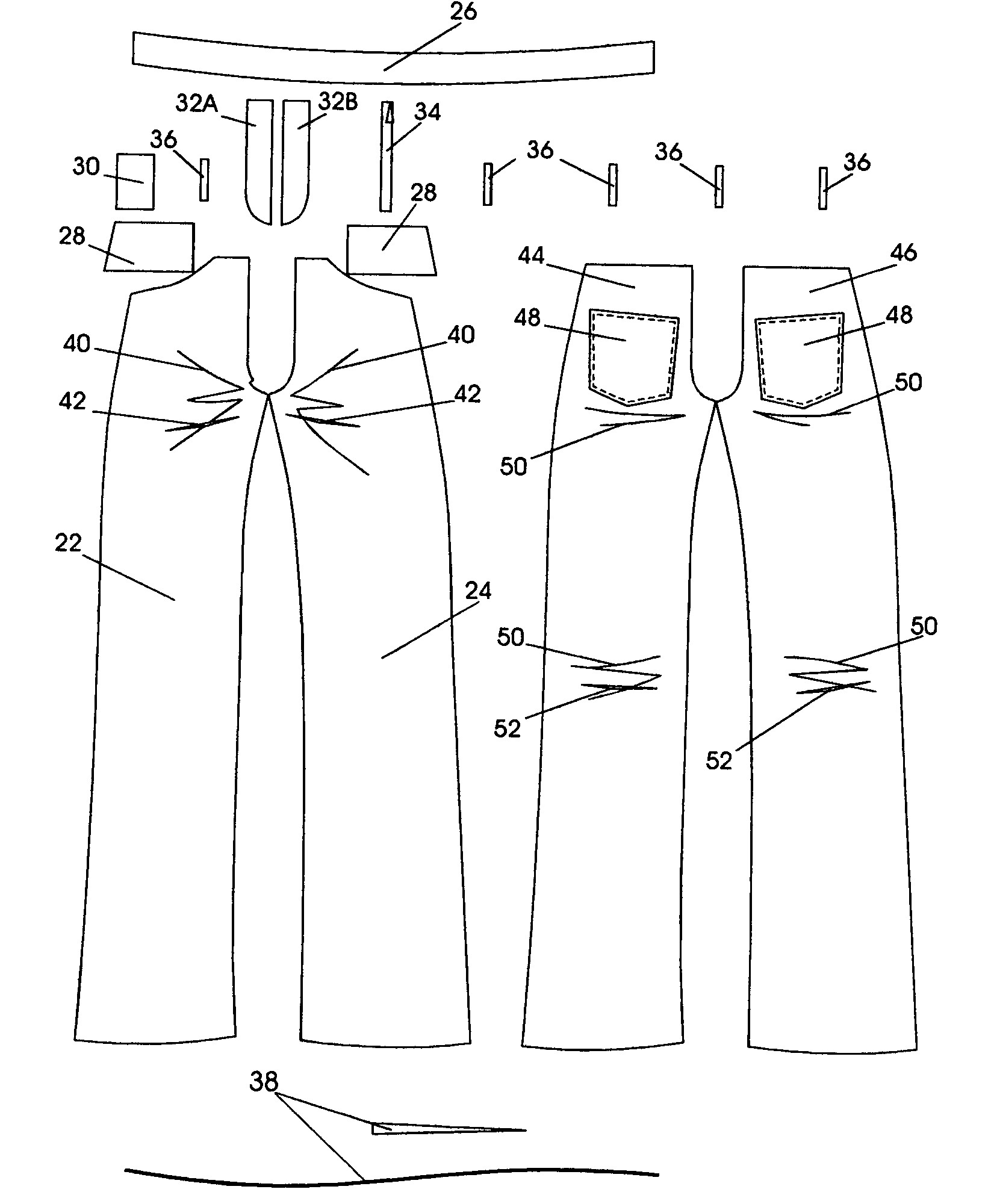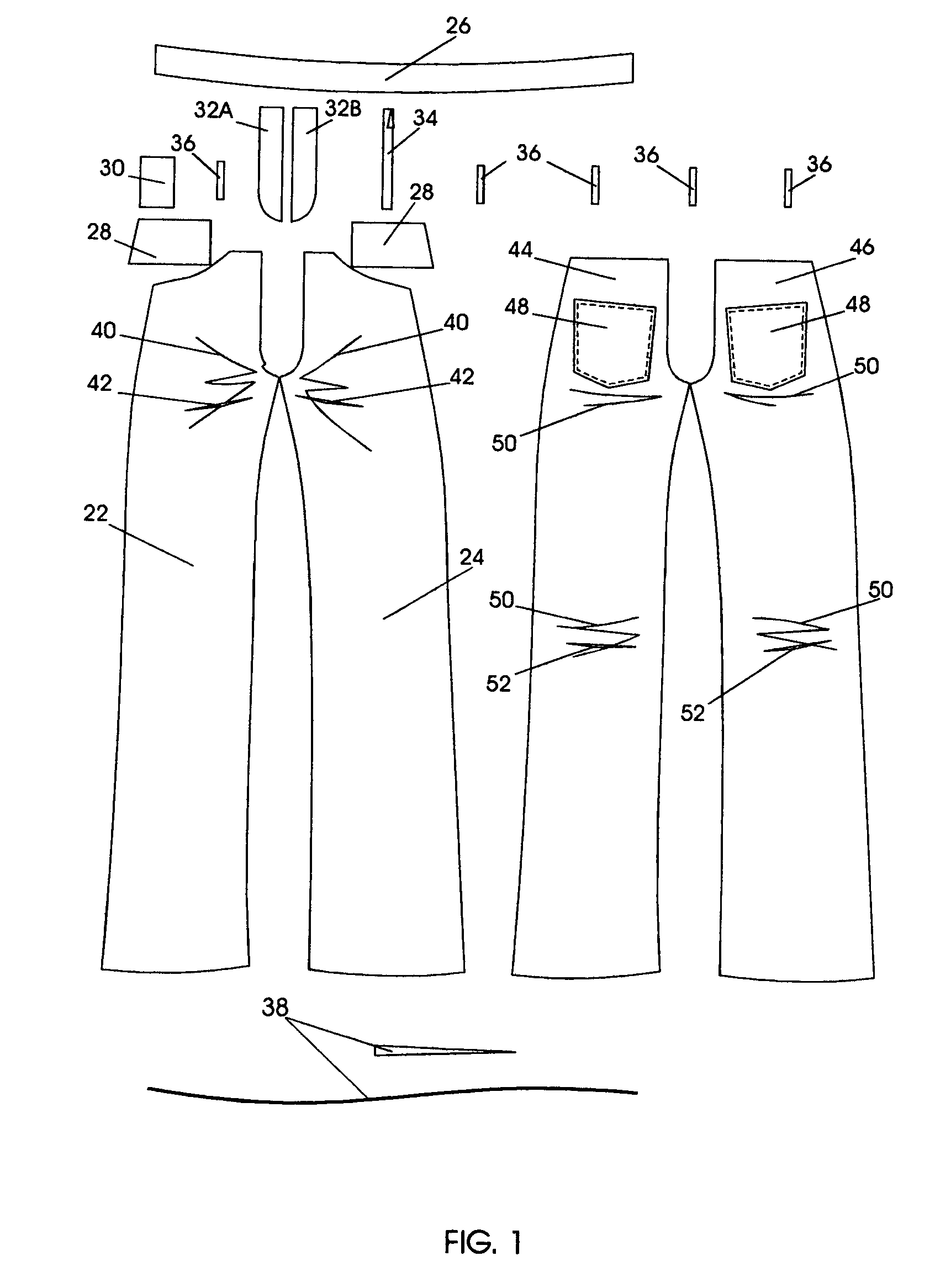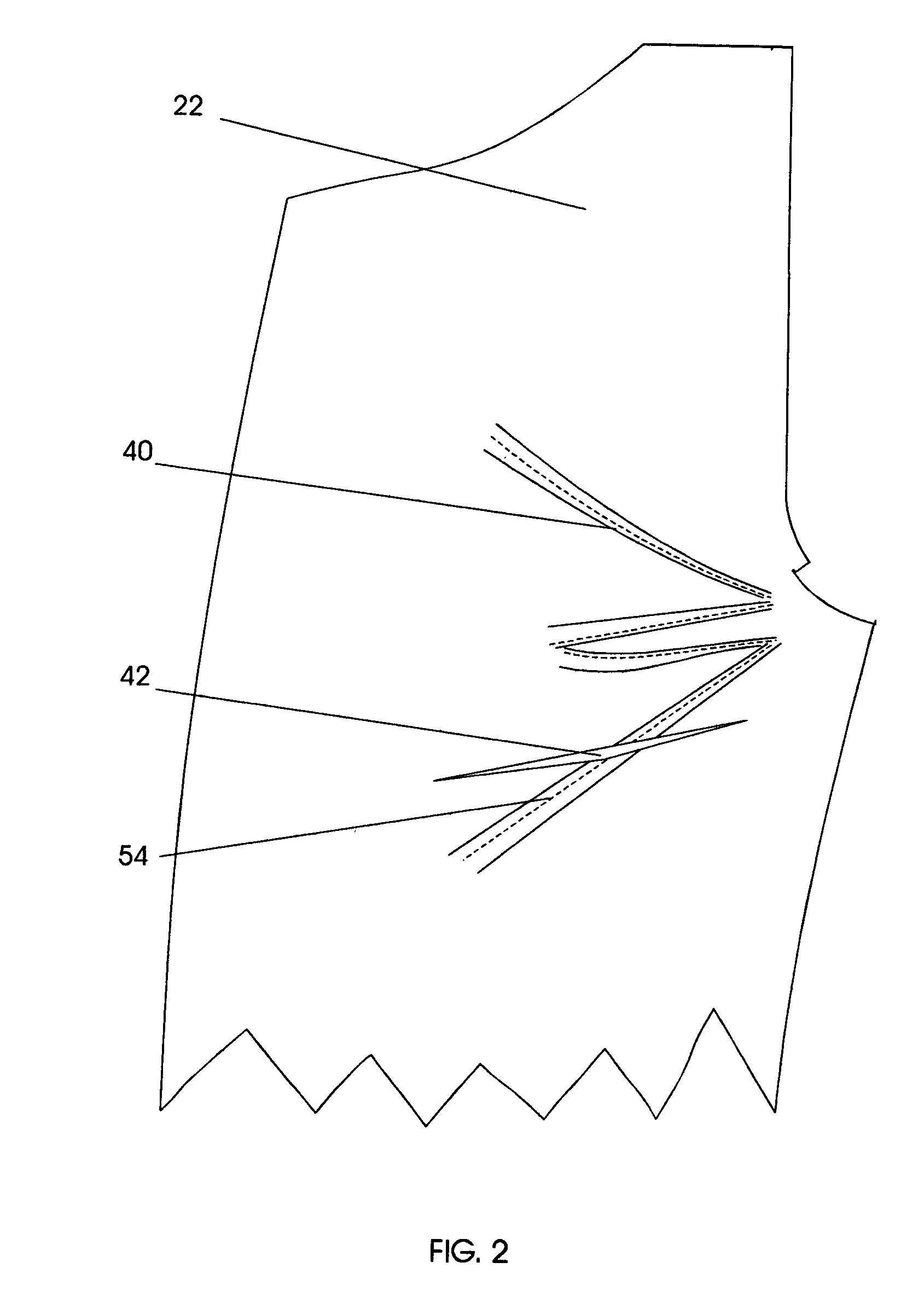Vintage fading method for jeans
- Summary
- Abstract
- Description
- Claims
- Application Information
AI Technical Summary
Benefits of technology
Problems solved by technology
Method used
Image
Examples
Embodiment Construction
[0024]Turning now in detail to the drawings, FIG. 1 shows separately each of the cut piece goods used to make a garment such as a pair of jeans 20 shown in FIG. 8. The goods include a front left piece 22, a front right piece 24, a waistband 26, two front pocket pieces 28, one coin pocket 30, one left fly 32A, one right fly 32B, one fly zipper 34, five belt loops 36, a cord 38, front corded tacks 40, front pleats 42, back left piece 44, back right piece 46, two back pockets 48, back corded tacks 50 and back pleats 52. One jean button (not shown) and one key hole (not shown) for the jean button are typically also on the waistband 26. Different cords may be used to make corded tacks 40 and 50. For example, corded tack 40 may be formed using one type of cord, and corded tack 50 may be formed using a different type of cord. The shape, length, and width (or diameter) of cords 38 may vary. One preferred shape for cord 38 is a long narrow triangle about three inches to four and one-half inc...
PUM
| Property | Measurement | Unit |
|---|---|---|
| Color | aaaaa | aaaaa |
| Shape | aaaaa | aaaaa |
| Area | aaaaa | aaaaa |
Abstract
Description
Claims
Application Information
 Login to View More
Login to View More - R&D
- Intellectual Property
- Life Sciences
- Materials
- Tech Scout
- Unparalleled Data Quality
- Higher Quality Content
- 60% Fewer Hallucinations
Browse by: Latest US Patents, China's latest patents, Technical Efficacy Thesaurus, Application Domain, Technology Topic, Popular Technical Reports.
© 2025 PatSnap. All rights reserved.Legal|Privacy policy|Modern Slavery Act Transparency Statement|Sitemap|About US| Contact US: help@patsnap.com



